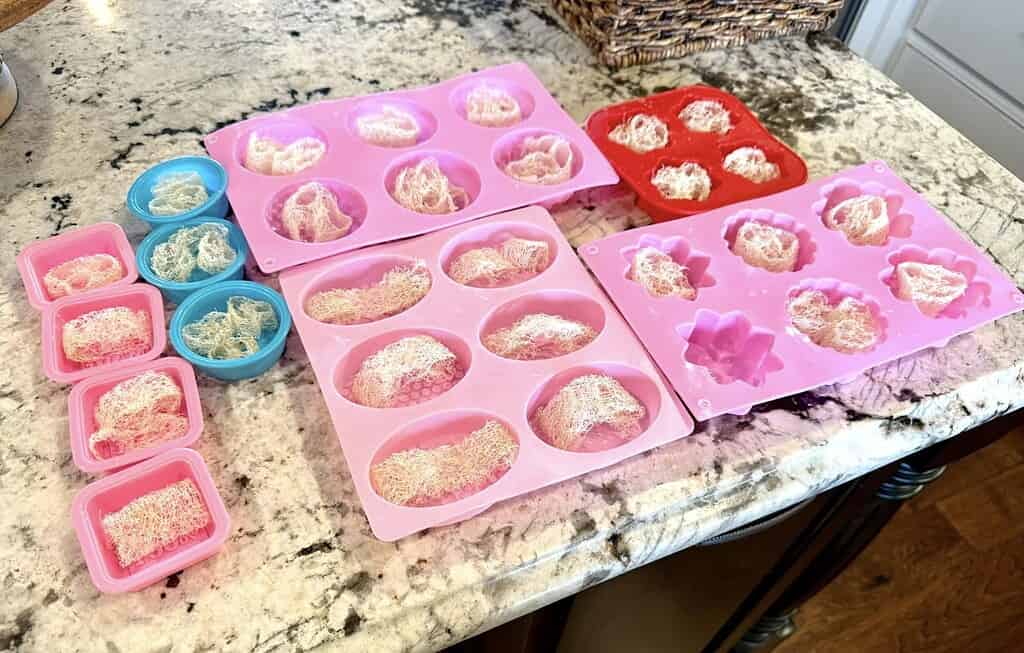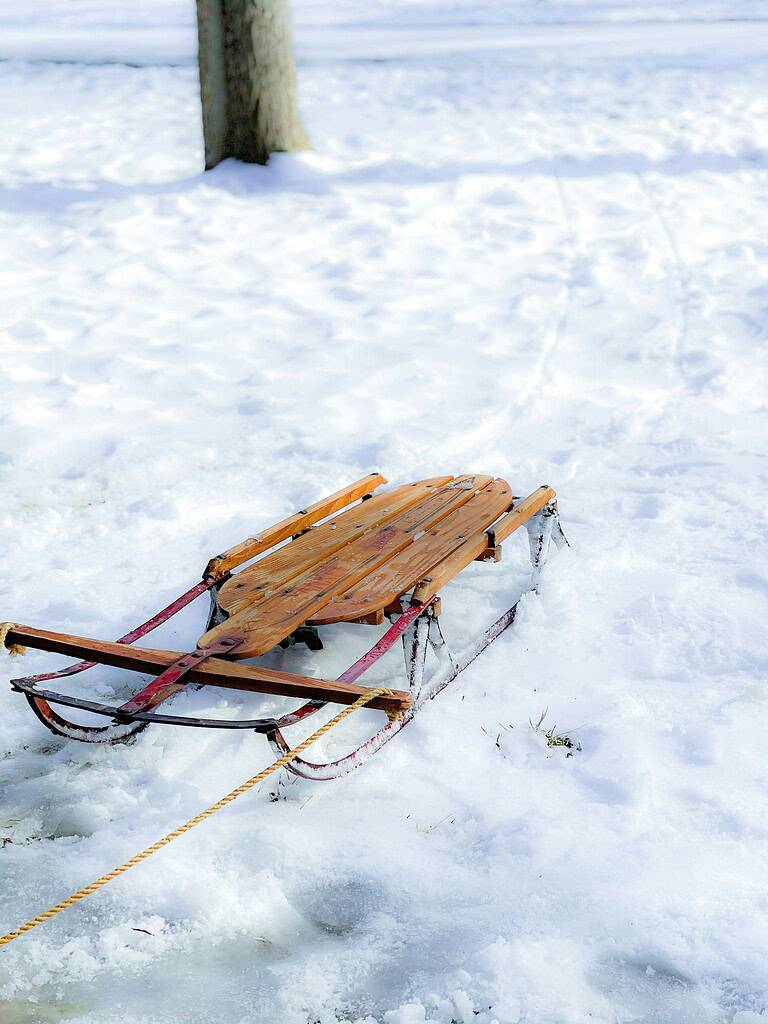Winter can be one of the most challenging seasons on a homestead.
Freezing temperatures, limited daylight, and reduced access to fresh resources make it critical to plan ahead and adapt daily routines. But winter doesn’t have to mean downtime or survival mode.
With the right habits, tools, and mindset, it can become one of the most productive seasons of the year.
In this article, I'll share 22 practical, time-tested tips to keep your home, garden, and livestock running smoothly through the cold months – while also setting yourself up for a better spring.
20 Essential Winter Homesteading Tips
Here are 22 practical tips to keep your home and homestead running smoothly through the season.
1. Map Out Next Spring's Garden
Winter is the best time to plan your garden while the land rests. Take advantage of the quiet months to draw out next year’s layout on graph paper or use a simple garden planning app.
Think through what crops worked well last year, what you'd like to add or remove, and how to rotate plant families to protect soil health.
List your seed needs now so you can order early – before popular varieties run out. A thoughtful plan now means less chaos and better yields come planting time.
For more inspiration, check out practical winter garden ideas to get a head start on spring.
2. Cover Garden Beds with Leaves and Compost
Instead of letting garden beds sit exposed through winter, cover them with a thick layer of leaves, compost, or both.
This protects the soil from erosion and compaction, while feeding microbial life below the surface. As the layers break down, they enrich the soil naturally – no tilling needed in spring.
This simple habit reduces weeds, locks in moisture, and minimizes how much work you'll need when planting season returns.
If you’re new to composting, here’s a helpful guide on how to compost the right way.
3. Inoculate Wood Shavings to Build Soil
If you can get untreated wood shavings – like those from a cabinet shop – don’t let them go to waste.
Spread them on the ground where you want to improve soil, and inoculate the pile with mycelium such as King Stropharia (wine cap mushrooms).
Over winter, the fungi begin breaking down the wood, turning it into rich, living soil. This method improves soil structure while keeping it covered and protected from harsh weather.
4. Use Abundance to Feed Livestock
During late summer and fall, fruit and vegetable harvests often exceed what a household can use or preserve.
Instead of stressing over preserving every bit, shift to an abundance mindset – use that extra food to feed your animals.
Let pigs or chickens forage fallen fruit under trees, or give them garden excess.
This turns waste into manure and saves money on feed. It also closes the loop between garden and livestock in a practical way.
5. Plant Long Winter Crops
Certain crops need cold to grow well, and garlic is one of them. Plant garlic cloves in late fall, 4 to 8 inches deep depending on your climate.
After planting, cover the bed with a thick layer of leaves or straw. This helps regulate soil temperature and deters animals from digging.
By spring, the garlic will be rooted and growing strong – saving you time and space when the planting rush begins.
For more cold-hardy options, see the best plants you can grow in winter.
6. Indoor Gardening with Free Supplies
You don’t need a fancy setup to grow food indoors during the winter.
Herbs like basil, cilantro, and parsley grow well in small pots on a sunny windowsill or under basic grow lights.
Reuse yogurt cups, plastic clamshells, or leftover seed trays to start your crops for free.
Microgreens (see here how to grow microgreens indoors) are another quick-growing option that provide fresh greens in just 1–2 weeks.
With minimal effort and no cost, indoor gardening gives you a fresh harvest even when snow is on the ground.
7. Master Homemade Bread or Sourdough
Winter is the perfect time to refine your bread-making skills. Homemade bread not only stretches your food supply but also helps warm the kitchen when the oven’s in use.
Start with simple yeast breads or dive into sourdough using flour and water.
Once you find a rhythm, baking becomes a regular part of your routine – and you won’t need to rely on store-bought loaves during winter storms or supply shortages.
8. Render Tallow or Beeswax Candles
Candle-making is both practical and comforting in winter. Use rendered tallow from beef fat or beeswax from your own hives to create clean-burning candles.
These are ideal for power outages and far safer than battery lanterns or open flame oil lamps.
Making candles also uses up materials that might otherwise go to waste, and it gives you a reliable light source without relying on the grid.
9. Harvest Fat from Bone Broth for Tallow
When making bone broth, don’t throw out the fat that rises to the top after cooling. Skim it off and store it in the freezer until you have enough to render. T
his fat, when cleaned and heated properly, becomes a shelf-stable cooking fat or can be used to make soap or candles.
It’s a simple way to make your homestead more self-reliant and reduce waste in the kitchen.
10. Craft DIY Homemade Natural Cleaners
Winter is a good time to restock your cleaning supplies without buying new ones. Mix vinegar, citrus peels, and essential oils for an effective all-purpose spray.
Baking soda, castile soap, and water can be used to scrub sinks or toilets. These simple cleaners are safe, cheap, and reduce the chemical load in your home.
Making your own also means one less trip to the store in bad weather.
11. Make DIY Homemade Beauty Products
You can make simple, effective beauty products using ingredients already in your pantry.
Combine coconut oil and beeswax for lip balm, mix sugar and oil for a body scrub, or infuse olive oil with herbs to make a soothing salve.
If you enjoy this kind of natural skincare, you might also love trying your hand at a simple tallow soap recipe, which uses traditional ingredients for a nourishing, old-fashioned clean.
These recipes are easy to adjust based on what you have. They also reduce waste, save money, and eliminate unnecessary additives found in store-bought products.
12. Create Unique Winter Bird Feeders
When snow covers the ground, food becomes scarce for birds. Help them through the cold by making bird feeders from scraps you’d normally toss.
Fill pinecones with peanut butter and seeds, hollow out orange halves and hang them, or tie old mugs filled with suet to branches.
These feeders support local wildlife while making use of materials you already have.
And if you enjoy feeding backyard visitors year-round, check out these safe hummingbird food recipes to keep your feathered friends healthy when warmer days return.
13. Start a ‘Buy Nothing’ Declutter Challenge
Winter is a good time to sort through your home and outbuildings.
Instead of throwing things away or buying more bins, join a local “Buy Nothing” group and give items a second life.
You’ll create space, help someone else, and save money – all without leaving the homestead. It's also a chance to build local connections during an otherwise isolating season.
14. Challenge Cooking with Long-Stored Goods
Set a goal to cook meals only from what’s in your pantry and freezer for a week or more.
This helps rotate older food, makes space for spring preserving, and keeps you from spending unnecessarily.
Stews, soups, casseroles, and pasta dishes are flexible ways to use up a mix of dried, canned, or frozen ingredients. It’s also a way to spot any gaps in your storage plan.
15. Repair Tough Clothing for Free
Winter work can be hard on clothing, especially outerwear used for daily chores.
Brands like Carhartt offer free repair services for rips, broken zippers, or worn cuffs.
Take advantage of these programs to extend the life of gear you’ve already invested in. It reduces waste and keeps you properly outfitted without spending on replacements.
16. Practice Deep Bedding Management
In winter, when animals spend more time indoors, managing waste becomes more important.
Use the deep bedding method by layering carbon materials like straw, wood shavings, or leaves in animal shelters. Add fresh bedding regularly instead of removing the old layers.
This keeps smells down, reduces labor, and creates warmth through composting heat. If there’s an odor, it usually means you need more dry carbon material.
17. Insulate and Ventilate (Avoid Heat Lamps)
Heat lamps are a common choice for small animals like chickens, rabbits, or quail – but they’re risky.
They pose a fire hazard and can prevent animals from building natural cold tolerance. Instead, focus on insulation and ventilation.
Keep coops draft-free but not airtight, and ensure dry bedding. Animals adapt well to cold when kept dry and protected from wind, even in freezing temperatures.
If you keep larger livestock, here’s how to keep goats warm in winter without relying on artificial heat.
18. Mitigate Mud with Infrastructure
Mud doesn’t have to be part of winter homesteading.
Install gutters on barns and sheds to direct water away from high-traffic areas. Use gravel, wood chips, or rubber mats around gates and water stations.
If pastures are constantly muddy, consider rotational grazing or planting cover crops to improve drainage. These changes protect animal health and reduce your daily workload.
19. Use a Snow Sled for Chores
In snowy climates, wagons and wheelbarrows quickly become useless.
A basic snow sled makes it easier to haul feed, water, and supplies across the property. Choose a durable, low-sided sled that glides well over snow and can handle weight.
It’s a small investment that saves time and effort every day through winter.
20. Proactive Frost Prevention
Freezing water lines and equipment can turn daily chores into emergencies. Prepare ahead by installing stock tank heaters, frost-free hose bibs, and insulation on outdoor faucets.
Make it a habit to drain hoses after each use to prevent freezing.
Doing this early avoids the stress of dealing with ice buildup when temperatures suddenly drop.
21. Refill the Herbal Medicine Cabinet
Before sickness hits, make sure your herbal remedies are stocked and ready.
Go through your supplies and refill items like elderberry syrup, echinacea tincture, garlic-infused honey, or herbal teas for cold and flu.
Winter isn’t the time to run to the store during a snowstorm or while sick. Having everything on hand early helps you respond quickly and care for your family with natural tools.
If you’re restocking or upgrading your setup, check out these top herbal remedy supplies for DIYers to make your process smoother and more efficient.
22. Take Winter Hikes for Cabin Fever
Staying indoors all season can lead to restlessness, low energy, and stress.
Set small goals for getting outside – even a short walk counts. Track your miles or explore new local trails when weather allows.
Cold air and movement support circulation, immunity, and mental clarity. Prioritizing regular outdoor time helps you stay grounded and productive through the long winter months.
Essential Winter Tools and Supplies to Keep on Hand
Winter can test every part of your homestead – from water systems to your own resilience.
Having the right tools and supplies on hand prevents emergencies, reduces daily stress, and helps you work efficiently in cold, wet conditions.
Here’s a list of essentials to stock before winter settles in:
- Snow sled or toboggan – For hauling feed, firewood, or supplies when wheels don’t work in snow.
- Stock tank heater – Keeps animal water troughs from freezing; essential for livestock in cold climates.
- Frost-free hose bibs and hose insulation – Prevent frozen pipes and make winter watering manageable.
- Grow lights – Allow indoor growing of microgreens, herbs, and seedlings despite low daylight.
- Extra bedding materials – Store plenty of straw, wood shavings, or dry leaves for deep bedding systems.
- Cold-weather clothing – Wool socks, waterproof boots, thermal layers, and insulated gloves for outdoor chores.
- Herbal remedies and basic first aid – Elderberry syrup, garlic, echinacea, and salves for treating common winter ailments.
- Pantry staples and preserving supplies – Dried beans, grains, salt, vinegar, and extra jars or lids for ongoing food storage.
- Tallow or beeswax – For homemade candles, soaps, salves, or other DIY projects.
- Mycelium spawn – For inoculating wood chips and preparing next season’s soil in advance.
Start Winter Strong by Putting These Tips into Action
Winter doesn’t have to be a season of survival – it can be one of steady progress and smart preparation.
By applying even a few of these 22 tips, you’ll reduce stress, protect your resources, and set yourself up for an easier spring.
Whether you're improving soil health, managing livestock more efficiently, or making your home more self-reliant, winter offers a valuable window to get ahead.
What are your must-do winter homesteading habits? Comment down below and share your best tips, struggles, or lessons learned – we’d love to hear from you.
FAQs
What’s the best way to store water for livestock without electricity?
Use insulated, covered containers and rotate fresh water often. Placing containers inside a shelter and surrounding them with straw can reduce freezing. In colder climates, heated water buckets or rubber tubs you can de-ice manually are effective low-tech solutions.
Can I use regular firewood ashes in the garden during winter?
Yes, but only in moderation. Wood ash can raise soil pH and add potassium. Apply only if your soil isn’t already alkaline, and avoid areas where you plan to grow acid-loving crops like potatoes or berries.
How do I keep my compost pile going in cold weather?
Keep it covered to retain heat and add high-nitrogen materials like kitchen scraps or manure regularly. Piles may slow down but won’t stop entirely. Turning the pile or insulating it with straw can help keep microbial activity going.
What indoor lighting works best for growing winter greens?
Full-spectrum LED grow lights are efficient and widely available. Position them close to your plants and keep them on for 12–16 hours a day. Even a basic setup can support microgreens, herbs, and leafy greens through the winter.
How do I know if I’m using enough bedding for my animals?
If you smell ammonia or see wet, compacted areas, you need more dry bedding. Bedding should stay dry to the touch on the surface, and animals should be able to nest or burrow in comfortably without sitting on hard ground.










